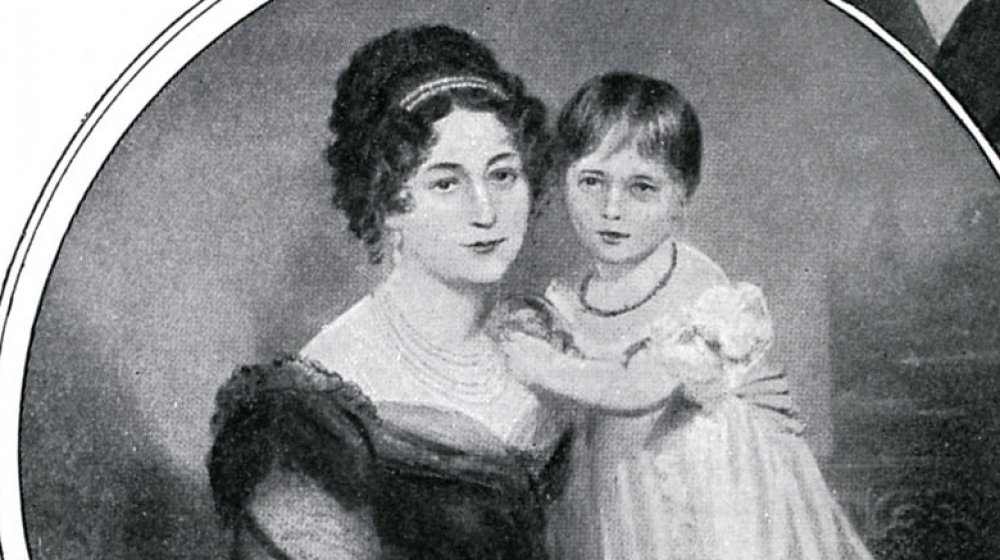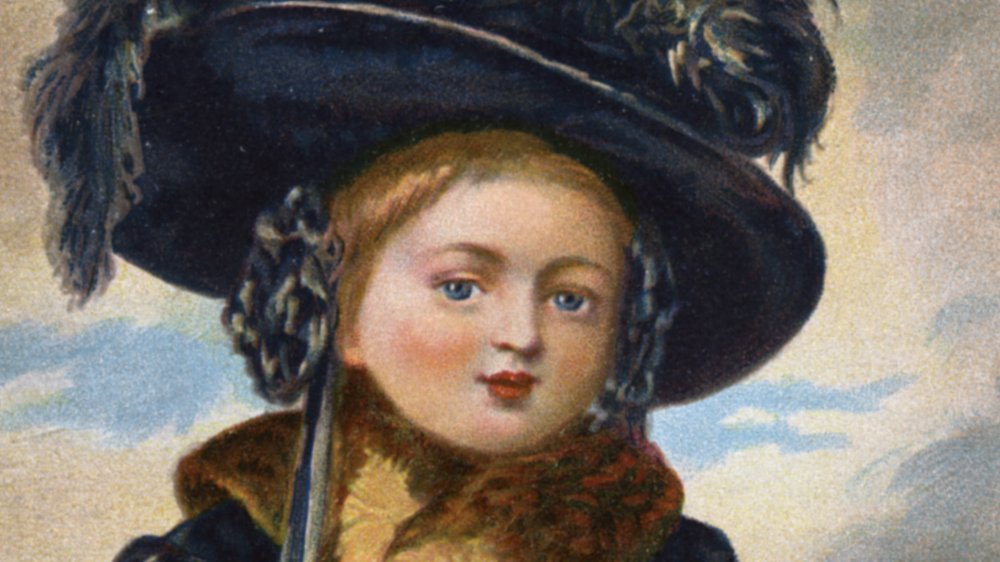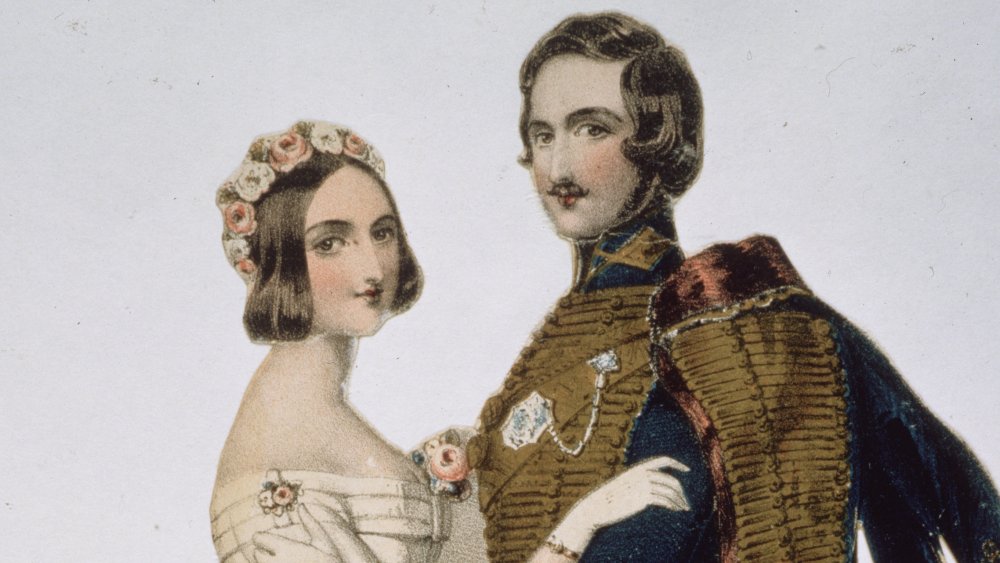What You Don't Know About Queen Victoria And The Kensington System
Are royalty born or made? Sort of, "Which is it? Nature or nurture?") (Take your time. We'll wait.) And if you answered "Both" you are quite correct. The bloodline is important for many countries ruled by royalty — it solves some problems in terms of succession, though if there's a dearth of successors that can be very problematic indeed. Take a look at England (just as a for-instance) and all the trouble that afflicted King Henry VIII over the issue of, well, issue. You might be inclined to think that, what with the example of Elizabeth I (Henry's daughter), Queen Victoria's ascent to the throne was a lock. Except it wasn't supposed to be.
It wasn't really anticipated that Victoria — born Alexandrina Victoria; pictured above with her mother — would end up ruling England, says the UK's Historic Royal Palaces website. There were others ahead of her: her grandfather, King George III; her father, who had the bad taste to die when Victoria was just a few months old; her uncle, the future George IV. And death claimed them all by the time Victoria was a teenager.
As a child, Victoria was almost never alone
Victoria's mother, the Duchess of Kent, might have seen it coming — or maybe just hoped. She was German, barely spoke English, and when her husband died found herself in a predicament. Her "advisor" (and if that sounds suspicious, you're probably right), Sir John Conroy, claimed that her late husband had asked him to look out for the widow and daughter. Think of it as a long-game chess match: If Victoria were in line for the throne (and she was) and if that happened sooner rather than later (and it very well might) she would probably require a regent — an adult to sort of mentor the new monarch. Someone like — her mother.
And so was born The Kensington System, a rulebook for Victoria's behavior and upbringing in Kensington Palace. Historians tend to agree that the real purpose of the system was to create an unhealthy reliance — of Victoria on her mother (and, by extension, John Conroy, the rascal). There was no privacy for Victoria (except for bathing, changing, and visits to the lavatory). She was to be accompanied at all times by someone — her mother, her governess, or her tutor, says Throughout History. No walking up or down stairs without holding the arm of someone else (preferably mother's). She was required to share a bedroom with her mother. And they wanted her to submit to the regency of her mother and, by extension, Conroy (the rascal).
An unhappy childhood, but a happy marriage
Victoria later claimed that the "system," such as it was, directly resulted in a not particularly happy childhood. What might have made it worse (or better, depending on your point of view) is that no matter how many times mother asked, Victoria refused to agree to a regency. And the long game lasted a little too long; by the time George IV died, Victoria had been 18 — an adult — for about a month. No legal need for anybody to be regent of anything. Not even John Conroy.
There were bright spots in Victoria's childhood — she was very close to her governess, Baroness Lehzen, who continued to be one of Victoria's close companions, says the UK's Royal Collection Trust. She married quite happily and deeply mourned when her husband, Albert, died. Did her childhood make her a better monarch? Some argue that it made her more popular — she had been kept away from her subjects as a child, and they were hungry to get to know her. She lived a long life — she died at 81, after 63 years on the throne.


